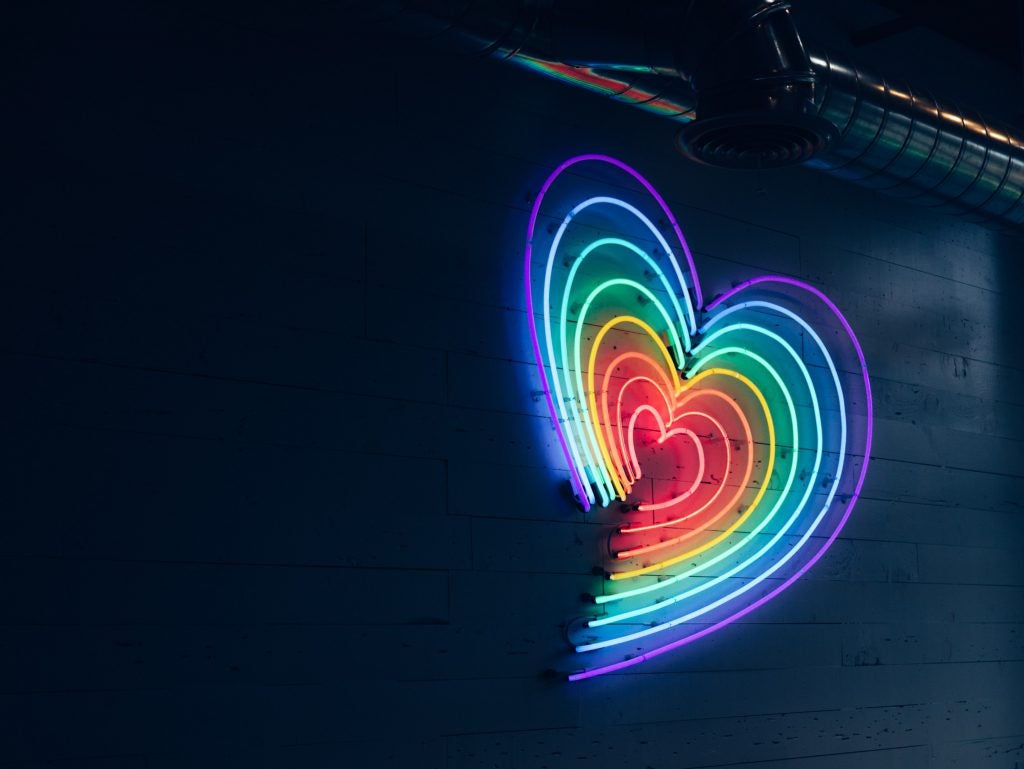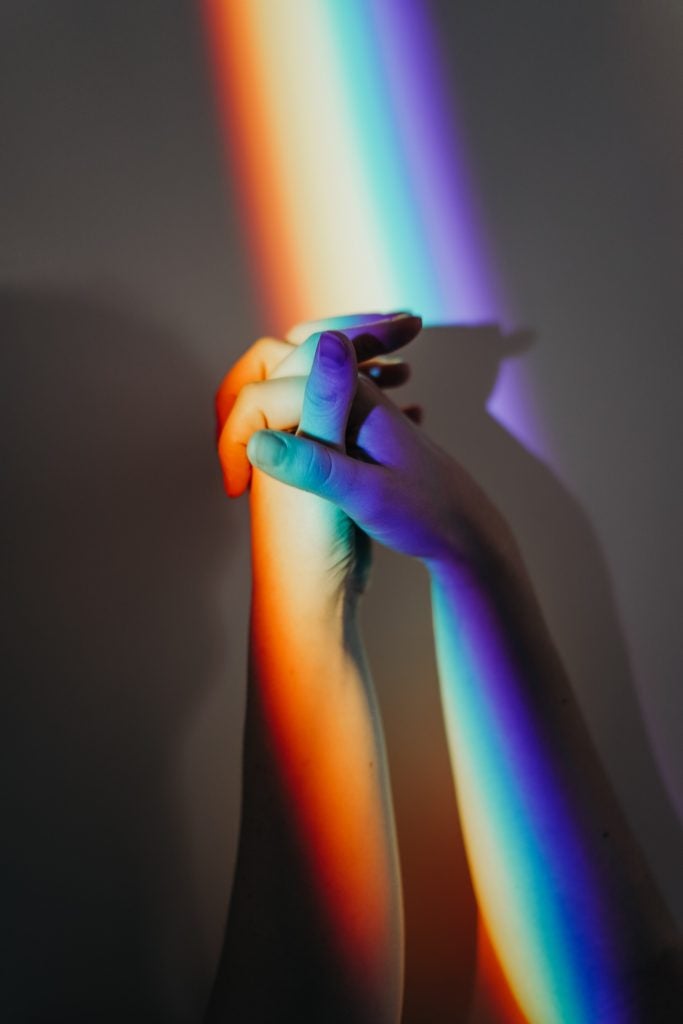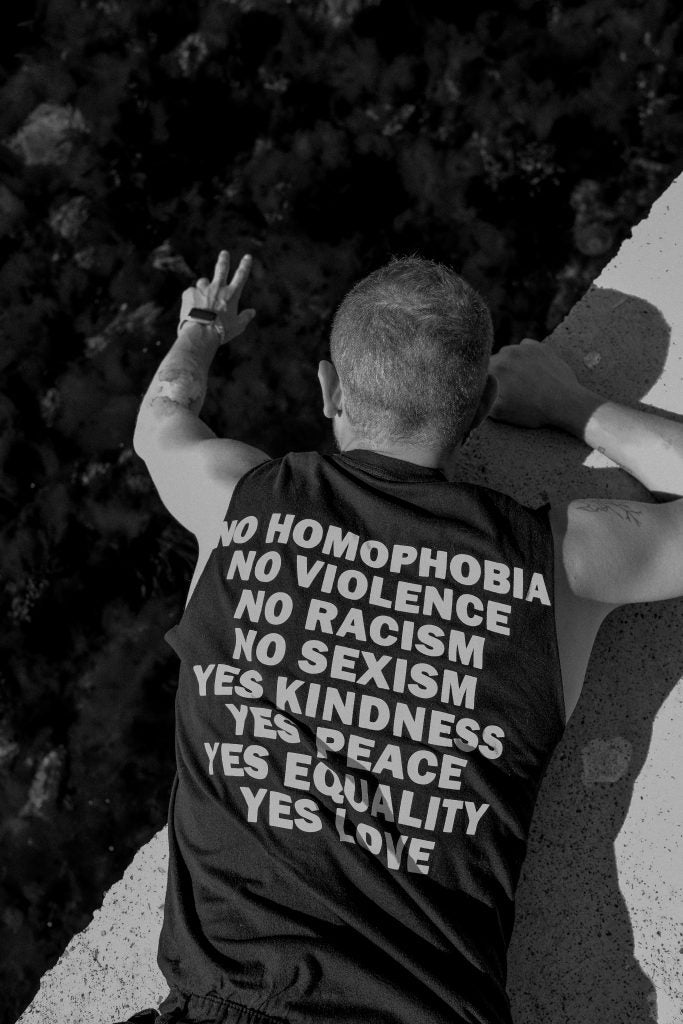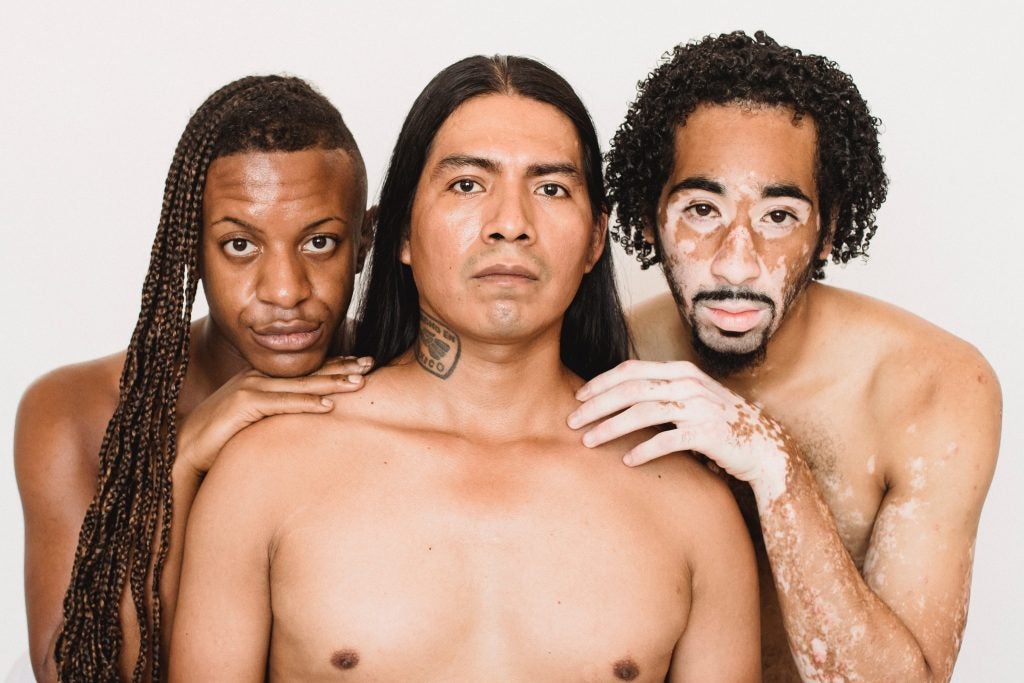
According to the Merriam-Webster Dictionary, homophobia is the irrational fear of, aversion to, or discrimination against homosexuality or homosexuals.1 However, people commonly describe homophobia as less of a fear and more of a prejudice and an intolerance toward those within the LGBTQ community.2 Whether it is believed to be an inherent and inborn quality or a lifestyle choice, the topic of homosexuality elicits strong emotions in some individuals. While negative reactions can be driven by fear, uncertainty, intolerance, or an overall lack of understanding, it is important to recognize that these are, by definition, irrational responses to those who do not fall within the heterosexual “norm.” Homophobic people have the potential to affect all members of the LGBTQ community by restricting their rights, denying them opportunities, creating intimidating or unwelcoming environments, and even inflicting verbal or behavioral violence based on their sexual orientation. Whether it appears in hurtful words, criminal actions, or more subtle forms of legal measures, sexual discrimination is apparent and pervasive in the modern world. Through a better understanding of homophobia’s history, leading causal factors, effects, and the literature that surrounds its discussion, individuals can take the necessary measures to combat the progression of homophobia.
Table of Contents
A Brief History of Homophobia
Prior to 1973, homosexuality was included in the Diagnostic and Statistical Manual of Mental Disorders (DSM) as a mental illness. One year before it was officially removed from the DSM, psychologist George Weinberg introduced the term “homophobia” to refer to the discomfort some heterosexuals felt while in the presence of gay men or lesbian women. He insinuated that these feelings stemmed from a fear of being “infected” by same-sex attraction, or from the symbolic loss of traditional and religious values seemingly represented by homosexuality. His publications on the topic further included reference to gender norms. Specifically, that men with homophobic ideologies exhibited disdain for homosexuality’s apparent deviation from “normal” male behavior. Gay men were assumed to act in a more effeminate way and to express affection for others in a way that was deemed unacceptable for straight men. While Weinberg’s examinations of homophobia address its fear-oriented aspects, describing it as a type of prejudice that, if left unchecked, could prove detrimental and dangerous to the homosexual community. As such, homophobia is often categorized among other forms of bigotry, such as racism and sexism, in social discussion. The introduction of homophobia as a concrete descriptive term for aversion to same-sex attraction served to change the conversation surrounding it. At a time when homosexuality was not widely accepted or understood, homophobia reflected judgments of immorality and offensive behavior back on heterosexuals who cast them.3
Both before and after the introduction of homophobia as a descriptive term, discriminatory practices and laws were put in place to restrict the lives of homosexual individuals. Sodomy laws, for example, outlaw any sexual acts of a non-procreative nature. Acts of sodomy originally included masturbation as well as oral and anal sex, making sexual activities between members of the same biological sex legally punishable. Many of these laws had religious foundation, as homosexual acts are specifically condemned in several prominent religious texts. During the 16th and 17th centuries, those who engaged in these acts were sentenced to death, and it was not until the early 1960’s that United States sodomy laws began to be repealed. Many countries still have sodomy laws in place, with severe punishments implemented for breaking them.4 Sodomy laws are problematic in that they restrict sexual interaction between members of the same sex. They reinforce the false ideals of heterosexuality as the norm, with all other types of sexual attraction as consequently “other.” While overtly homophobic laws (such as sodomy laws) do exist, some laws are more discreetly homophobic than others. In the United States, for example, a law was in place for approximately 30 years that prohibited gay men from donating blood. The outbreak of HIV/AIDS during the 1980’s spurred the creation of this law, in that AIDS was thought to be a disease restricted to the gay community. While gay and bisexual men may have a higher chance of contracting the virus through anal sex, it is not limited to gay men and can be contracted sexually or non-sexually by both homosexual and heterosexual individuals. The United States Food and Drug Administration lifted its ban on blood donation from gay men in 2015, yet mandated that donation only be permitted for those who had not engaged in sex with another man for a full year.5
Homophobia has made appearances not only in the makers of the law, but in those who enforce it. Homophobic actions imposed by law enforcement predate the origin of the gay rights movement, and are markedly evident in the Stonewall riots of 1969. The riots occurred in response to a police raid on a known gay bar in Greenwich Village, New York City. Patrons were ousted and several were arrested based on their violation of homophobic and gender-discriminatory dress codes. Police raids of gay bars were common at the time, yet in this particular case patrons of the bar began to fight back against the unjust actions of the police. Used to more docile and submissive crowds of homosexual individuals, the police lost control of the situation, and the state of unrest persisted for several days after the original raid. The Stonewall riots are an iconic moment in the history of the LGBTQ community, as well as the history of homophobia. It represents one of the first instances in which people took up active opposition to homophobic behaviors and unjust repression of people based solely on sexual orientation. While the United States retained its homophobic nature even after the riots subsided, this event gave gay men, lesbian women, and all members of the LGBTQ community new confidence to stand up for themselves, their equality, and their rights.6
Factors Influencing Homophobia

There are various characteristics of an individual and the society in which they live that can lead to the development of homophobic beliefs and attitudes. Many of these center around the notion of traditional gender roles, and the idea that homosexuality contradicts these in both men and women. For some, homophobia can help disguise the personal fear of not being able to uphold these gender roles.7 It has also been found that certain demographic features—such as gender, race, age, marital status, and level of education—are linked to the presence of homophobia. Scientific studies addressing the issues of homophobia revealed several common traits among those who exhibited attitudes of intolerance and sexual prejudice: they are most often older, less educated, and conservatively religious; they have lived in rural areas (such as the midwestern United States) where homosexuality and homosexual behavior is less accepted, and they have spent time with peers who support this norm; and they believe more strongly in traditional values and gender roles and are less likely to have had close contact with anyone in the LGBTQ community.8 Some psychologists argue that homophobia stems from a repressed desire to explore one’s sexuality fully, and that hateful speech or actions serve to mask an individual’s true self and curiosities. Some men may feel confined by socially constructed masculinity and envy gay men who can escape from this and express themselves to the fullest extent. Others believe that homophobia allows heterosexuals to assert and maintain their dominance as a majority within society.7
The issue of gender roles seems to take a prominent position in the discussion of homophobia. In the traditional sense, men are expected to be more confident, assertive, competitive and ambitious in their endeavors, while women are expected to take a more submissive and docile role, demonstrating more empathetic and nurturing qualities. Women are also permitted to outwardly display emotion, while men are often not afforded the luxury of such expressiveness within the confines of social norms. These aspects of gender roles extend across cultural lines, and those who break them are often cast out as “other.” Men who espouse traditional qualities of femininity, such as displays of affection, are often labeled as gay; likewise, women who exhibit more masculine qualities may be deemed lesbian.9 In fact, the societal construction of masculinity has been of particular interest in studies of homophobia. Given that gay men are more often the target of homophobic attitudes than are lesbian women, people are more often struck by males who breach social constructs of masculinity. In a study conducted on attitudes of homophobia in father-son relationships—specifically among fathers with gay sons and sons with gay fathers—the research and findings center on masculinity as a social norm. Results indicate a pervasive presence of homophobia within father-son relationships where homosexuality exists, especially for individuals who view masculinity through a narrow lens. Homosexuality is viewed as a violation of traditional masculinity by those with homophobic views. While many fathers and sons who had previously held some homophobic views reported decreased homophobia after their loved one’s coming-out, most remained uncomfortable with the prospect of their own sexual orientation opposing heterosexuality and masculinity norms.10 While stereotypes of homosexuality often contradict gender roles, such behaviors are not wrong or abnormal. However, actions that do not parallel the majority’s behaviors can spark homophobia. Those who harbor homophobic beliefs view these differences as an affront to traditional family values, and they choose not to accept people whose behavior may not align perfectly with their ideals of gender. Thus, they often do not accept those whose sexual orientation does not align with the heterosexual majority.
In addition to gender roles, religious fundamentalism stands out as a factor that can influence the development of homophobic attitudes. Many religious texts posit that there is only one correct way to live one’s life, and any deviance from the set path is immoral, unacceptable, and wrong. In many cases, homosexuality does not fall within the guidelines set by sacred texts, and thus people who are strongly guided by religion tend to harbor more homophobic beliefs. It has been hypothesized that this connection may be due to many religions’ strong emphasis on traditional familial values and gender roles. People who are more involved in their religion are more likely to adopt its standards of living, and as discussed above, may feel that homosexuality is a violation of these standards. A study conducted on the relationship between religious fundamentalism and homophobia found the strength of these connections to be exaggerated. Religion and ideas of gender roles were evidently independently influential on homophobic attitude development. However in many cases, homosexuality is still deemed a hostile characteristic to religious individuals, and thus many of them intuitively perpetuate homophobic stereotypes and behaviors.11
Apart from larger influences like religion and gender roles, there are some smaller environmental elements that may shape homophobic views. For example, many homophobic people were raised in families or communities in which intolerance for homosexuality was common. A lack of sufficient education may also contribute to the formation of sexual prejudice, and those who have not known or met any members of the LGBTQ community are far more likely to adopt belief in homosexual stereotypes.7 Homophobia has also been linked to the presence of other types of prejudice and discrimination, such as racism or sexism.11 While it is helpful to understand the factors that may lead to homophobia, it is equally beneficial to be aware of factors that lead away from it. Younger individuals whose parents and communities preach tolerance for others are less likely to adopt homophobic attitudes. Further, higher education presents an environment of unique diversity, in which people from all backgrounds coexist. In a place like this, being surrounded by others with different sexual orientations can provide the exposure necessary to dispel stereotypes and dampen the influence of homophobia.7 Overall, it is important to understand that homophobia is not a permanent affliction, and that just as certain circumstances foster its growth, others may support its dissolution.
Manifestations and Effects of Homophobia

Homophobia can manifest in a variety of ways, each of which can cause severe emotional, psychological, or even physical damage to those on the receiving end. Exhibitions of homophobia can range from verbal to violent, and incidents of outward hate and intolerance can occur anywhere. Given that homophobic attitudes are not immediately visible, non-heterosexual men and women may feel fearful in many situations throughout daily life, many of which heterosexual people take for granted.12 An examination of homophobic hate and violent acts against members of the Australian LGBTQ community found that a great deal of anti-gay violence occurs on the street during early morning or late night hours, often nearby to known gay clubs or bars. Confrontations are usually between strangers, and many times involve a group of attackers against a solitary victim. Physical attacks are also generally accompanied by insulting slurs and discriminatory comments.13 Recent reports indicate that approximately one out of every five gay or lesbian individuals have experienced a hate crime in some form, and that of those experiencing hate crimes, 75% did not report the incidents to authorities. Hate crimes can occur in severe cases of homophobia, and demonstrate its often shocking prevalence in the modern world. One of the most prominent hate crimes of the recent past is the case of Matthew Shepard, an openly gay college student attending the University of Wyoming. Matthew was abducted by two heterosexual men, tied to a roadside fence, severely beaten, and left to die in freezing temperatures. He was later found by a passerby and taken to a hospital, where he was pronounced dead several days later. This hate crime is still viewed as a prime example of the extent to which homophobia is instilled in modern culture.14 Although not all homophobic acts culminate in physical violence, any manifestation of discrimination can be traumatizing.12
While growing up, children are impressionable and are influenced by the most prominent figures in their world: family, friends, admired celebrities, and the like. At school, homophobic stereotypes perpetuated by peers can cause considerable damage to a developing youth, especially as they progress into adolescence. Adolescence is a critical period for identity formation, and it can be an especially difficult period to navigate for those who find that they may fall outside of the norms they have grown up with. A young individual who is questioning their sexuality can feel threatened, disgusted, or fearful of themselves as a result of perpetuated homophobic stereotypes and hurtful labels. For example, boys who do not participate in stereotypical gender role-consistent behaviors are often criticized and called feminine or weak.
Terms such as “faggot,” “gay,” and “homo” are also too frequently substituted for words like “lame,” “stupid,” or “dumb.” By definition these terms are clearly not interchangeable, yet are often treated as such. For a young person who may be struggling with their identity, hearing these offensive terms used so casually by their peers can be hurtful, and make it increasingly difficult for them to accept themselves and feel that they will be accepted by others. Casual use of derogatory language can also instill in children the idea that it is okay to use such words. Although replacing less offensive words like “lame” with “gay” might not seem homophobic on its face, the integration of homophobic terms into one’s vocabulary can set the stage for future homophobic thoughts and actions. Further, labeling one’s sexual orientation prior to full self-acceptance of one’s sexual orientation can result in feelings of isolation, shame, or internalized homophobia (a situation in which an individual begins to accept and adopt the stigmatized discourse that surrounds them).15
Further, the effects of homophobia can remain with an individual long after they have transcended adolescent development. Members of the LGBTQ community are more likely to experience issues with their mental health, often due to the effects of internalized sexual stigmas or experience with discriminatory acts. Many suffer from depression, anxiety, eating disorders or thoughts of suicide as a result of applying negative stereotypes to themselves.15, 16 Effects of internalized homophobia have also been found to include relationship difficulties in gay, lesbian and bisexual couples. These difficulties are often tied to the exaggerated elements of depression that accompany adoption of stigmas.17 A more recent study of internalized homonegativity confirms this phenomenon, indicating that the depressive feelings it often evokes correlate with loss of closeness and intimacy within same-sex relationships.18 Although relationship quality is not directly influenced by the presence of homophobia and internalized homophobia, the lasting effects on an individual’s mental health are illustrated throughout numerous scientific studies.17, 18
Homophobia, Heterosexism, and Sexual Prejudice
In recent literature, discussion has surfaced of the need to re-address the terms used to describe discrimination based on sexual orientation. The term “homophobia” has, for many years, been the most familiar and widely used term to describe acts of intolerance against members of the LGBTQ community. However, it is somewhat limiting within the scope of more modern discourse. “Homophobia” implies that any actions instigated against homosexual individuals are products of fear caused by exposure to their “abnormal lifestyle.” This reinforces the already prevalent concept of heterosexuality as “normal,” the assumption that everyone is heterosexual, and the stigmatization of those who are not heterosexual as “immoral,” “sick,” and “other.”

To remedy this line of thinking, researchers have suggested changing the discussion of homosexual discrimination to include the term “heterosexism.”19 Heterosexism is the assumption that heterosexuality is the norm, and the resulting prejudice against any sexual orientations that are not heterosexual. This term shifts ideas away from those centering on fear and discomfort with homosexuality and focuses on the more descriptive elements of intolerance and undeserved hatred. It aligns the idea of sexual orientation-based prejudice with other pervasive societal forms of bigotry, such as sexism and racism.20 Heterosexism further directs attention away from the homosexual minority that is subject to acts of discrimination, and redirects it to members of the heterosexual majority. In other words, this terminology reinforces the fact that identifying with a minority sexual orientation is not cause for change, but that the possession of heteronormative beliefs is.19 Heterosexism does not limit the discussion of oppression or discriminatory acts to just gay men and lesbian women, but to all members of the LGBTQ community.
This idea can be made even more inclusive through the use of the phrase “sexual prejudice,” which describes any form of discrimination directed at a member of a sexual minority group.20 For example, biphobia is a term used to describe the irrational fear of or discrimination against those who identify as bisexual. People who are bisexual often face a great deal of discrimination from both heterosexuals and members of the LGBTQ community. Sexual prejudice can here be used to describe bias against bisexual individuals, whereas homophobia seems to exclude the prospect of bisexual discrimination. Heterosexism serves to alter the way in which people think, speak, and act about intolerant and hateful acts against sexual minorities. It brings attention to such beliefs in the sense that they are societal as opposed to individual afflictions. However, it is noted in relevant literature that terms such as heterosexism and sexual prejudice may not necessarily conflict with homophobia. Many researchers choose which term they feel best serves the purposes of their studies.19
Addressing Homophobia
While the discourse on homophobia has addressed that such feelings are not inherently egregious or evil,20 the permitted growth and spread of homophobic beliefs within society, and especially their transfer into discriminatory actions, is in need of rehabilitation. A significant amount of the intolerance toward minority sexual orientations stems from ignorance or lack of education regarding those orientations. Therefore, it is prudent to share information about the various orientations with others.21 It is important for LGBTQ individuals and heterosexuals alike to remember that other sexual orientations are not deviant, but simply add to social diversity. Educating oneself and others is crucial to changing how the world views and discusses sexual minorities, and to changing the discussion to focus on the inherent issues with homophobic belief systems rather than with minority groups.19 In this way it is possible to foster a more tolerant and welcoming social environment for those who identify with the LGBTQ community.21
Concluding Remarks
The existence of homophobia within society can be highly damaging and threatening to those affected by it. Sexual minorities of all ages feel the presence of heteronormativity as it manifests within society, regardless of whether it is on the playground, in school, on television, or reflected in the law. The common view of heterosexuality as the “norm” is dangerous and detrimental to those who identify with minority sexual orientations. The passing of hateful beliefs from generation to generation only allows the issue of homophobia to grow larger and more prominent, with forms of external discrimination ranging from negative slurs to murderous hate crimes. Although the gay rights movement has continued to progress, moving knowledge and tolerance in a positive direction while working to eradicate hatred, this drastic a change takes time. With continued effort to educate others and update the conversation on homophobia, people can create a more enlightened and accepting society for individuals of all sexual orientations.
References
- “Definition of Homophobia.” merriam-webster.com. Merriam-Webster Dictionary, 2017. Web. 16 May 2017.
- “GLAAD Media Reference Guide – Lesbian/Gay/Bisexual Glossary of Terms.” glaad.org. GLAAD. Web. 16 May 2017.
- Herek, Gregory M. “Beyond ‘Homophobia’: Thinking About Sexual Prejudice and Stigma in the Twenty-First Century.” proquest.com. Sexuality Research & Social Policy: Journal of NSRC, Apr. 2004. Web. 17 May 2017.
- “History of Sodomy Laws.” glapn.org. Sodomy Laws Around the World, 15 Apr. 2007. Web. 19 May 2017.
- Feliciano, Ivette and Zachary Green. “Why so many gay and bisexual men can’t donate blood in the U.S.” pbs.org. PBS SoCal News, 20 Aug. 2016. Web. 20 May 2017.
- “Stonewall Riots.” brittanica.com. Encyclopedia Brittanica. Web. 19 May 2017.
- Bernstein, Mary. “Paths to Homophobia.” proquest.com. Sexuality Research & Social Policy: Journal of NSRC, Apr. 2004. Web. 17 May 2017.
- Herek, Gregory M. “Hating Gays: An Overview of Scientific Studies.” pbs.org. PBS SoCal Frontline. Web. 20 May 2017.
- Durell, Megan et al. “Race, Gender Expectations, and Homophobia: A Quantitative Exploration.” proquest.com. Race, Gender & Class, 2007. Web. 17 May 2017.
- Bucher, Jacob. “‘But He Can’t Be Gay’: The Relationship Between Masculinity and Homophobia in Father-Son Relationships.” proquest.com. Journal of Men’s Studies, 2014. Web. 17 May 2017.
- McDermott, Ryon C. et al. “Exploring men’s homophobia: Associations with religious fundamentalism and gender role conflict domains.” proquest.com. Psychology of Men & Masculinity, 2014. Web. 17 May 2017.
- “What is Homophobia?” lgbt.foundation. LGBT Foundation. Web. 21 May 2017.
- Van Reyk, Paul. “Homophobia, Hate, and Violence against Lesbians and Gays in NSW: An Overview of Some Studies.” aic.gov. Australian Institute of Criminology. Web. 20 May 2017.
- “Matthew’s Story.” matthewshepard.org. Matthew Shepard Foundation. Web. 20 May 2017.
- Iudici, Antonio and Massimo Verdecchia. “Homophobic Labeling in the Process of Identity Construction.” proquest.com. American Journal of Men’s Health, Dec. 2015. Web. 20 May 2017.
- Walch, Susan E. et al. “Discrimination, internalized homophobia, and concealment in sexual minority physical and mental health.” proquest.com. Psychology of Sexual Orientation and Gender Diversity, Mar. 2016. Web. 21 May 2017.
- Frost, David M. and Meyer, Ilan H. “Internalized homophobia and relationship quality among lesbians, gay men, and bisexuals.” proquest.com. Journal of Counseling Psychology, Jan. 2009. Web. 17 May 2017.
- Thies, Kristin E. et al. “Internalized homonegativity and relationship quality in same-sex romantic couples: A test of mental health mechanisms and gender as a moderator.” proquest.com. Psychology of Sexual Orientation and Gender Diversity, Sep. 2016. Web. 21 May 2017.
- Smith, Ian Patrick et al. “Homophobia to Heterosexism: Constructs in Need of Revisitation.” proquest.com. Gay and Lesbian Issues and Psychology Review, Apr. 2012. Web. 17 May 2017.
- “Definitions: Homophobia, Heterosexism, and Sexual Prejudice.” psychology.ucdavis.edu. Sexual Orientation: Science, Education, and Policy. Web. 21 May 2017.
- “Homophobia.” prideresourcecenter.colostate.edu. Colorado State University Pride Resource Center. Web. 21 May 2017.
Last Updated: 16 June 2017.
